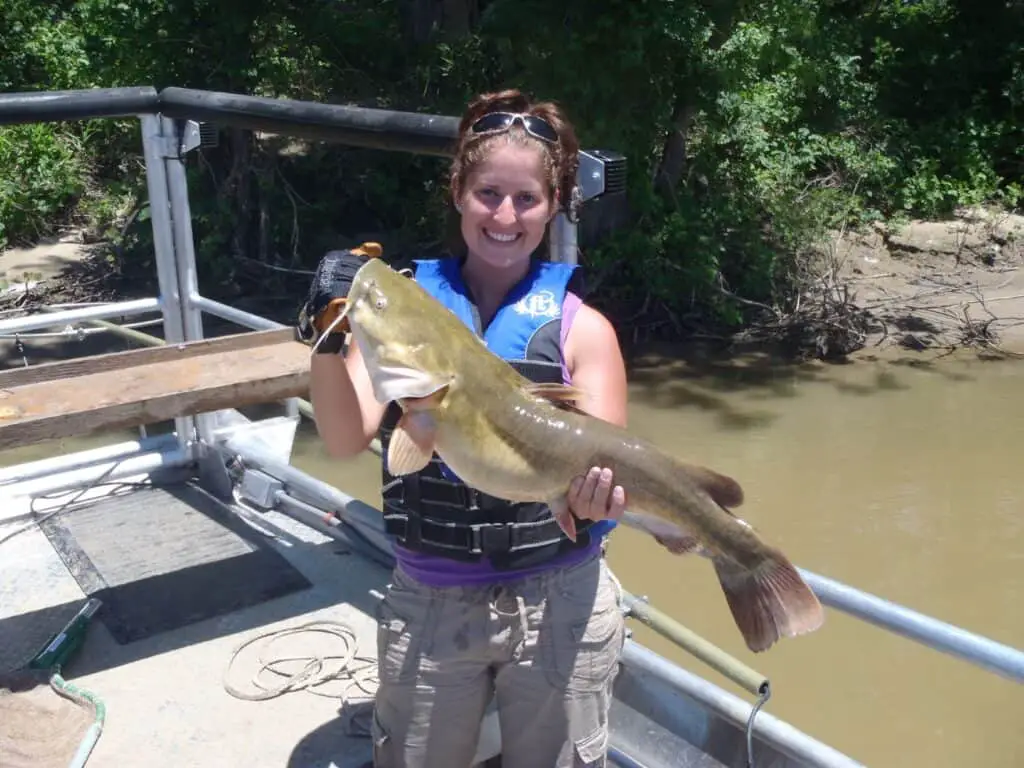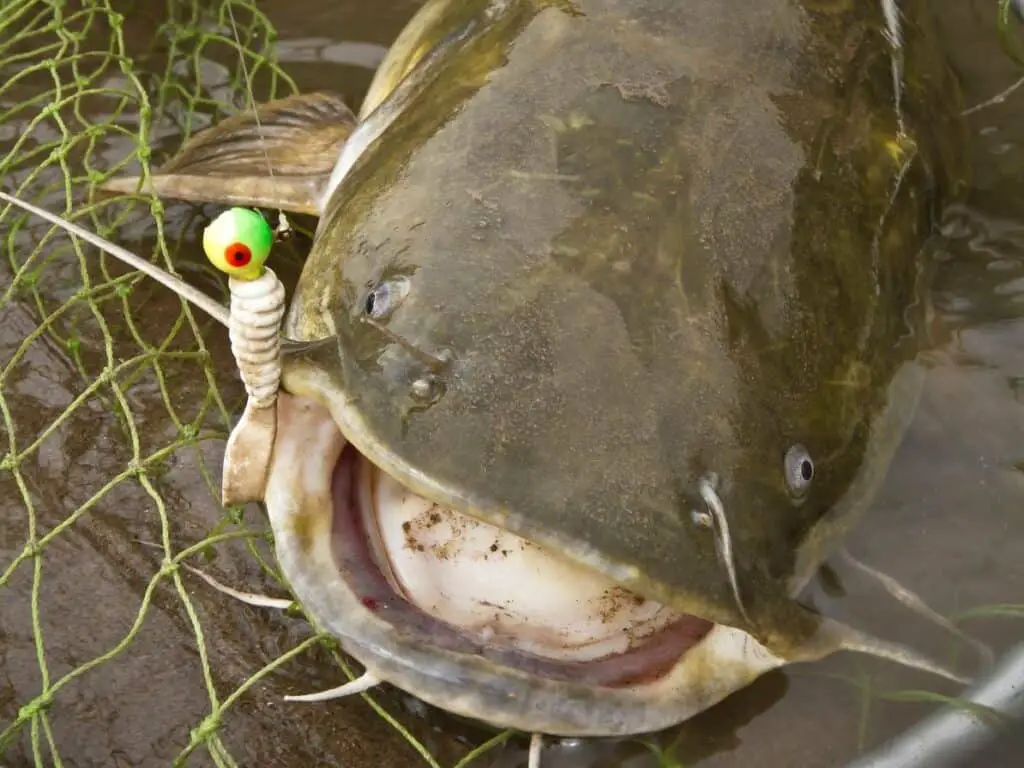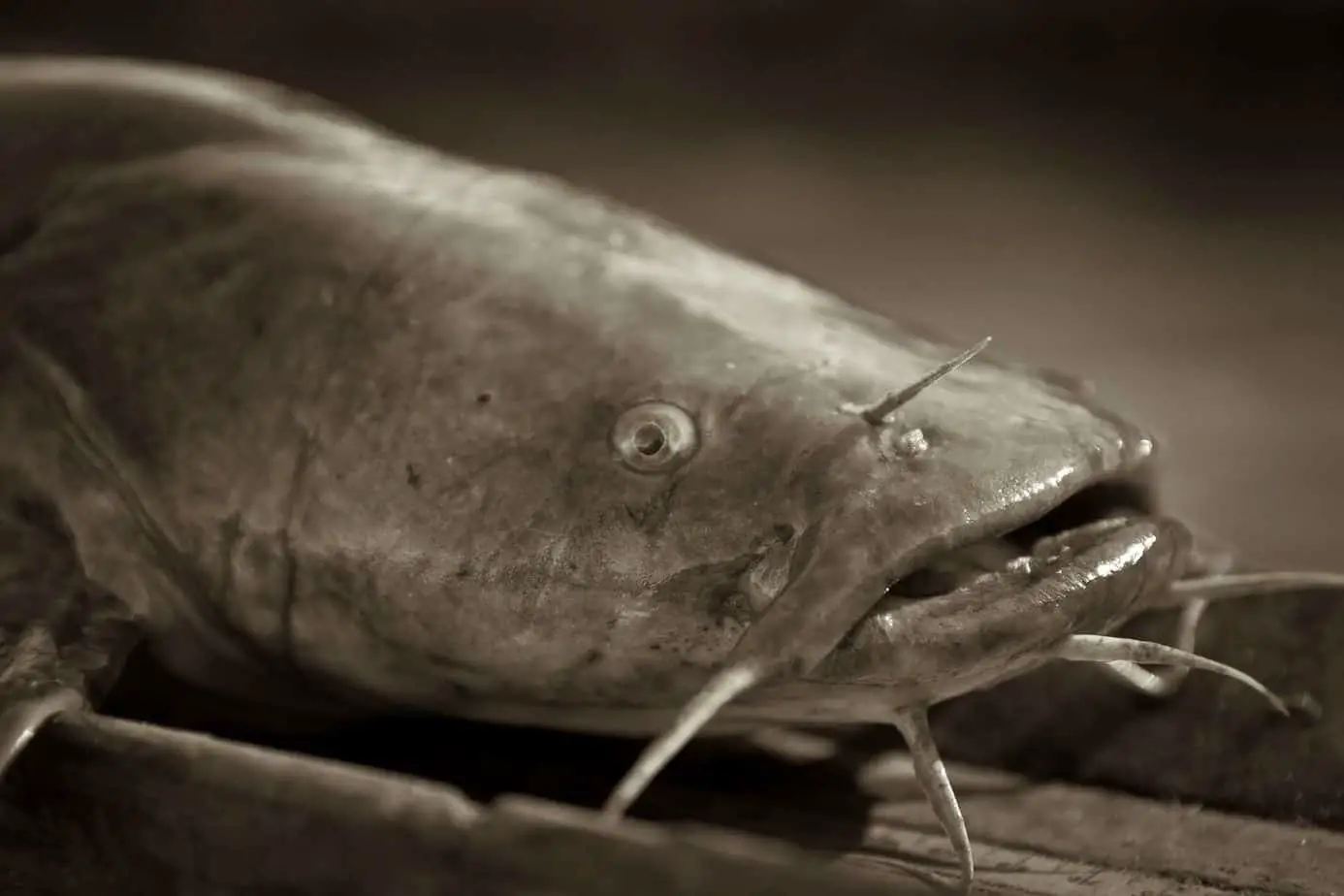Lakes and rivers are the habitats of the Flathead Catfish, especially in the Mississippi region. Also known as mudcat and shovelhead cat, these fish can grow to exceptional size. This article explores this fish from its natural habitat to its place on the dining table.
Are Flathead Catfish good to eat? There are many catfish species, but the Flathead is renowned for its fantastic flavor and is said to be the best catfish to eat. The Flathead Catfish is very distinctive in its appearance, having a square-shaped tail instead of a more usual forked look.
Catfish is low in sodium and calories; it is also packed with vitamins and Omega-6 and Omega-3 fatty acids. A versatile and delicious fish indeed, read on to discover just hope to prepare and cook this fish (and a few tips on how to catch it too!)
The Best Way To Cook Flathead Catfish
Preparing Flathead Catfish
Catfish are best kept alive until it is time to eat it. The quickest and easiest way to kill the Flathead is to pith it. Simply position the point of a sharp knife directly above the brain area and stab through to the brain.
Leave the head and tail on for now as it is easier to move the fish about with these. Cut around the base of the head, but leave it intact. This helps with getting a good grip on the fish for skinning it.
Remove the fins, as they are sharp and dangerous. Young Flathead Catfish skin is not tough, so begin removing the skin from the head downwards toward the tail. You can use a sharp knife, fingers, or pliers to remove the skin. Older Flathead Catfish skin is thicker and can be removed easier.
Remove the head where you previously cut. You will need a sharp knife as you will cut through the spine. Cut along the belly to the anal fin and gut, do not puncture the gut as this has a foul odor. Remove the guts and clean the cavity with running water.
Cut from the dorsal side of your fish to the spine to begin removing the fillet. Then turn around and cut from tail to vertebrae from the bottom. Trim carefully, ensure you get as much meat as possible, and lessen the number of bones left on the fillets. Rinse the fillets under running water. Throw the carcass away, or if you wish, you can keep the head, wash it and use it for a fishy stock.
Cooking Flathead Catfish
Skillet grilled Flathead is a simple, quick, and delicious meal—mix all-purpose flour with herbs to your liking. A good mix is onion and garlic powder, thyme, pepper, and cayenne pepper, and a bit of dried basil. Rub your fillets in the dried mixture and skillet grill them in butter. They take about five to ten minutes.
Chowder! It goes hand in hand with the Flathead Catfish. Rich and creamy with that cream corn, a rounded meal for all. Many chowder recipes are available, and you can vary this dish in many ways that suit your needs.
Baked, fried, grilled, or stewed, this incredibly versatile fish is good to eat. And it is good for you too, which is always a bonus in these health-conscious times.
Eating Flathead Catfish
A crisp Chardonnay will go down a treat with that Flathead Catfish Chowder. Fresh crusty bread is a wonderful accompaniment to most fish dishes.
Grilled or skillet grilled Flathead Catfish can be enjoyed with homemade potato fries, or try sweet potato fries as the sweetness really enhances the flavor of the fish.

Flathead Catfish Fishing Tips and Techniques
In this section, we cover some hints and tricks to help you capture these beasts. However, the first thing on your shopping list should be a bucketload of patience, particularly if you are after trophy fish!
When to Fish for Flathead Catfish
You can fish for Flathead Catfish all year round. However, if you are looking to catch larger specimens, then aim for when the water is at its warmest is best. When the water temperature rises between the low 70s to the mid-80s is when this fish really thrives.
This ‘sweet spot’ varies by region and climate. Check out some local knowledge to find the best time in any given region.
Catfish are mainly nocturnal feeders, so the best bet is to fish in the dark and through into the dawn.
Get The Right Tackle
Every time you fish for Flathead Catfish, there is the potential to catch something huge. You don’t want to lose that fish of a lifetime simply because you tackled up too light. 40lb-test line should be an absolute minimum and be paired with heavy-duty reels and rods.
Hook sizes should be large as well. Depending on the size of fish the water contains, these can be anywhere between 2/0 and 9/0. Always ensure that your hooks are as sharp as possible.
What Bait To Use For Flathead Catfish
These are not scavengers and like to hunt live prey. If you are serious about landing a large catfish, then live bait is the only way to go. Common species to use are chubs, bullheads, smaller carp, and suckers. Many anglers will also use fish like goldfish for bait and can have success on them. If you want to aim for trophy-sized fish, then use as large a bait as possible.
With live bait, it is always worth checking the local regulations as these methods are strongly regulated in many states and sometimes on particular waters.
Prepare For A Fight
These fish are ferocious fighters, and if you hook into a large one, it is unlikely you will ever have experienced anything like it. These babies can strip 100 yards of line from your reel before you can even begin to get it turned. You need to try and tire it out as quickly as possible. The trick is to keep your rod as high as possible and let it fight against the bend of the rod.
Finally, a net capable of landing these fish is essential.

Facts About Flathead Catfish
God did not smile upon this fish in the looks department, but it has its own beauty, particularly as far as the angler is concerned. In this section, we are going to list some of the fascinating facts about this wonderful fish.
- It’s a big cat – These creatures can grow up to 123lbs and larger. The world angling record was a whopping 123lb and 9oz. It was caught in the Elk City Reservoir in May 1998. However, a larger specimen has been recorded. Although the method of its catch excluded it from the angling record books, this fish was a massive 139lbs and 14ozs. It was pulled from the Arkansas River.
- Diet – Flathead Catfish are a carnivore that prefers live prey. It isn’t too fussy about what the prey consists of. They have been known to eat other fish species, crawfish, other crustaceans, insects, and even small mammals. Larger specimens usually have a diet that consists of fish only.
- Distribution – The natural range consists of the wide-area west of the Appalachian Mountain range and stretches as far north as Canada and down as far as Mexico in the south.
- Habitat – Fish this size needs big bodies of water with ample food supply, Catfish tend to inhabit large reservoirs and lakes and larger rivers and some of their tributaries. In rivers, they tend to stick in slower moving water, such as deep pools.
- Watch for the Spines – Catfish should be handled with care. Needle-sharp spines on the dorsal fin and pectoral fins can easily pierce an angler’s hands and frequently do. These spines have mild venom just to make it a more uncomfortable experience.
Conclusion
These are truly magnificent creatures and are considered an invasive species in many parts of the US. In these areas, all flathead catfish that are caught should be killed. It seems a shame to waste all that wonderful meat. These are fantastic fish to eat if prepared and cooked correctly. So, with that in mind, it just remains to wish you good fishing and Bon Appetit.
If you find this article helpful, don’t leave without sighing up for our newsletter and checking out our Recommended Fly Fishing Gear List.
Don’t forget to check out our other Fish Guide articles.
- Are Bass Good To Eat?
- What’s the Difference Between Trout and Salmon?
- Are Bonefish Good To Eat?
- What’s the Difference Between Carp and Buffalo Fish?
- Are Pike Good To Eat?
- The 7 Best Secret Rainbow Trout Baits
- Best Powerbait For Stocked Trout
- What Is The Difference Between Walleye And Pickerel?
- What Is A Tiger Trout? Where to Find One and How To Catch One


